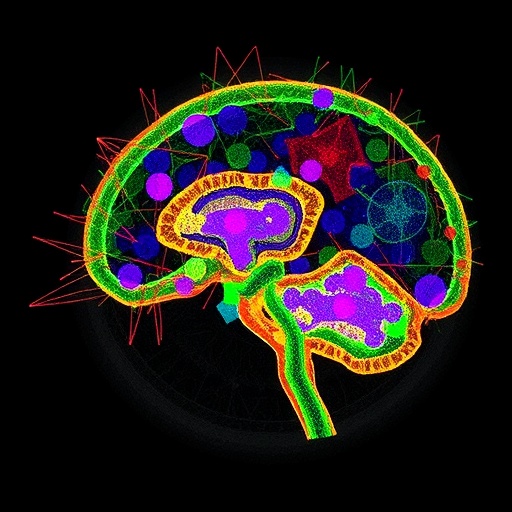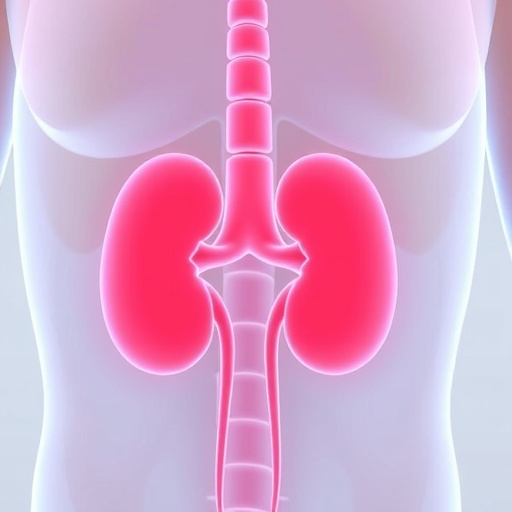In a groundbreaking advance poised to reshape neuroscience research, a team of scientists has unveiled a molecularly defined cellular atlas of the entire mouse brain with isotropic single-cell resolution. This extraordinary achievement offers unprecedented insight into the complexity and cellular composition of one of biology’s most intricate organs. The comprehensive cellular map not only charts individual cells across the entire brain but also defines them molecularly, setting a new gold standard for brain atlasing efforts worldwide.
The creation of this atlas addresses a long-standing challenge in neuroscience: the ability to capture the full breadth of cellular diversity in the mammalian brain with exact spatial precision. Previous brain mapping approaches either lacked molecular detail or were limited to partial brain regions, leaving gaps in the integration between cellular identity and spatial organization. By integrating cutting-edge molecular profiling techniques with advanced imaging technologies, the researchers have overcome these hurdles and produced a holistic single-cell resolution map that is truly isotropic—meaning it maintains consistent resolution in all spatial directions.
Utilizing innovative single-cell RNA sequencing protocols paired with refined volumetric imaging methods, the team succeeded in profiling millions of cells from the mouse brain. These cells were meticulously characterized not only by their gene expression patterns but also by their precise three-dimensional coordinates in the intact brain volume. The isotropic resolution ensures that no anatomical distortions occur during data acquisition, enabling accurate mapping of cellular distributions, neighborhoods, and connectivity pathways.
Beyond the technical finesse, what makes this atlas transformative is its molecular definition of every cell it catalogs. By anchoring each cell to a molecular identity defined through transcriptomic profiling, the researchers enable detailed functional insights into how different cell types contribute to brain circuitry and, ultimately, neurological behavior. This level of resolution also paves the way for pinpointing subtle cellular phenotypes associated with development, aging, or disease states.
One particularly compelling aspect of the study is its scale. Unlike focused investigations limited to a handful of brain regions, this comprehensive map encompasses the entire mouse brain, making it an invaluable reference for the global neuroscience community. Researchers can now interrogate any brain area with molecular clarity and spatial context, accelerating discoveries that link brain architecture to function.
The sheer scale and complexity of the dataset required the development of novel computational pipelines to accurately integrate and analyze multimodal information. Sophisticated algorithms facilitated the alignment of molecular profiles with spatial coordinates, allowing the extraction of meaningful patterns and cellular classifications. The result is a multidimensional brain atlas that stands as both a resource and a blueprint for future studies.
Furthermore, the atlas supports the exploration of cellular interactions at the microenvironmental level. By visualizing how distinct molecularly defined cell types are positioned relative to one another within brain circuits, scientists can infer potential communication pathways and regulatory mechanisms. This insight is crucial to unraveling how cellular networks orchestrate complex brain functions such as memory, sensory processing, and motor control.
This cellular atlas also has far-reaching implications for disease modeling. Many neurological disorders, including Alzheimer’s, Parkinson’s, and autism spectrum disorders, arise from disruptions in cellular composition and function. With the ability to map these changes precisely, researchers can develop targeted therapeutic strategies grounded in an authentic understanding of affected cell types and their spatial context.
Moreover, the methodology developed for this atlas could serve as a template for mapping other complex organs beyond the brain. The combination of molecular profiling with isotropic high-resolution imaging is broadly applicable to tissues where cellular heterogeneity and spatial arrangement are critical to function, such as the heart, kidney, or immune system.
An important future direction highlighted by the authors involves integrating this atlas with longitudinal studies to capture dynamic changes in the brain over time. Such longitudinal atlases would illuminate how cellular landscapes evolve during development, adaptation, or in response to external stimuli, offering even deeper mechanistic insights into brain plasticity and resilience.
The publication of this article marks a seminal milestone in the field and invites collaboration as the scientific community harnesses this resource. Open access to the dataset and associated analytical tools is expected to catalyze a wave of new investigations, from basic neuroscience to translational research aiming to remedy neurological ailments.
In conclusion, this molecularly defined cellular atlas of the entire mouse brain sets a new frontier by delivering an integrated, high-resolution blueprint of brain cellular architecture that bridges biology, technology, and computation. Its creation epitomizes the power of interdisciplinary innovation to illuminate some of the most fundamental questions about the brain, promising profound impacts for neuroscience research and medicine in this decade and beyond.
Subject of Research: Neural cellular architecture and molecular profiling of the mouse brain
Article Title: Molecularly defined cellular atlas of the entire mouse brain with isotropic single-cell resolution
Article References:
Zhao, M., Zhou, J., Jiang, T. et al. Molecularly defined cellular atlas of the entire mouse brain with isotropic single-cell resolution. Nat Commun 16, 10167 (2025). https://doi.org/10.1038/s41467-025-65238-5
Image Credits: AI Generated
DOI: https://doi.org/10.1038/s41467-025-65238-5
Tags: advanced imaging technologies in neurosciencecellular composition of mouse braincellular diversity in mammalian braincomprehensive brain cell characterizationinnovative brain mapping approachesisotropic brain mappingmolecular profiling techniquesmouse brain cell atlasneuroscience research advancementssingle-cell resolution neurosciencesingle-cell RNA sequencing methodsspatial organization of brain cells





